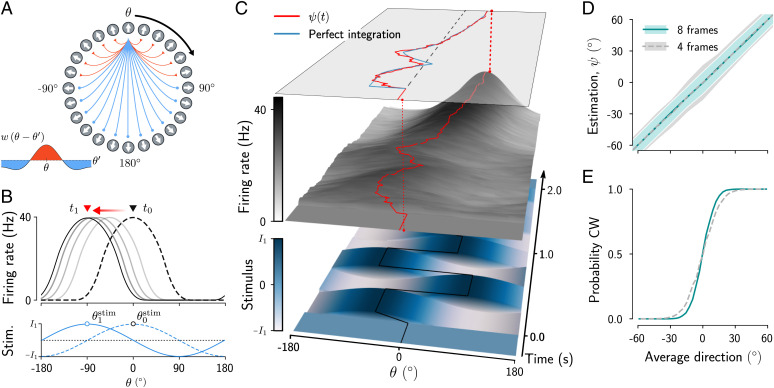Fig. 1.
Stimulus integration in the bump attractor network. (A) Ring network with Mexican-hat connectivity— that is, strong local excitation (red connections) and broader inhibitory coupling (blue). (B) Network activity for neurons arranged according to their position in the ring (A). Due to strong recurrent connectivity, a bump of activity emerges in this network at a position determined by the external input and persists when the input is removed. For time-varying inputs, the activity bump (dashed line) moves toward a new position (solid black line). (C) Network activity in a single trial. The initial activity of the network (Middle) is spatially homogeneous and evolves into a bump while integrating a time-varying stimulus composed of eight oriented stimulus frames (Bottom). (C, Top) The phase of the bump (red) as a function of time closely tracks the running average of the orientations of the stimulus frames (blue). (D and E) Continuous stimulus estimate (D) and probability of clockwise choices (E) as a function of the average stimulus direction for stimulus durations of 1 s (four stimulus frames of 250 ms) and 2 s (eight stimulus frames). Categorical choices were obtained by converting positive angles to clockwise reports and negative angles to counterclockwise reports. Error bars indicate SD. Stim., stimulus.

